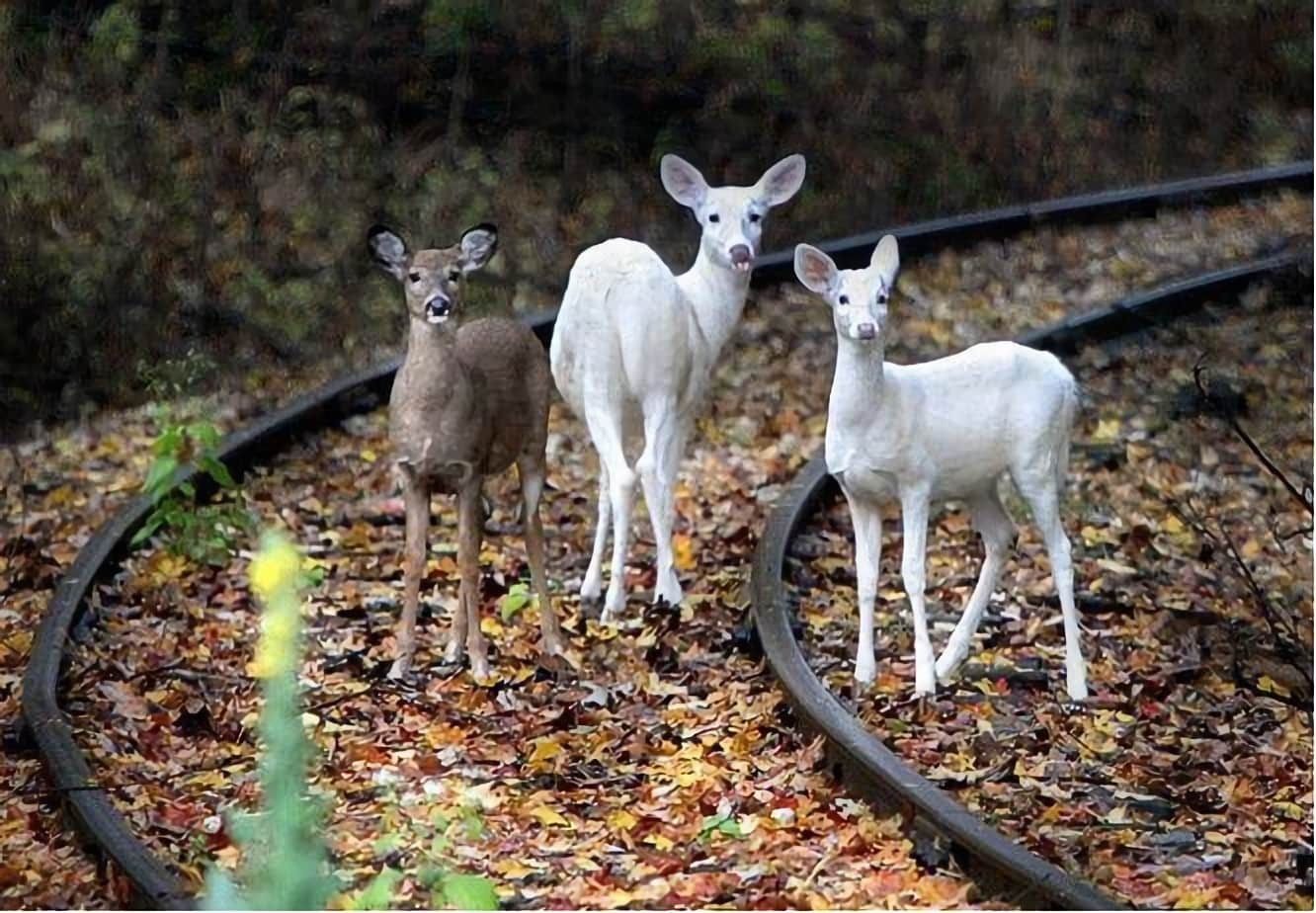North America’s Largest White Deer Herd Suffers Dramatic Decline
OutdoorHub Reporters 02.04.16

The effort to preserve the largest known herd of white deer in North America took a blow this week when an aerial census revealed that the herd had lost over half its numbers since 2008. For decades, the white deer herd has lived within the borders of the Seneca Army Depot in Seneca County, New York. Sheltered behind the fences of the abandoned depot, the herd is nonetheless threatened by predators, harsh winters, and the looming prospect of development on the 7,000 acres of depot land offered up for bidding. Dennis Money, president of the non-profit group Seneca White Deer Inc., recently took a helicopter survey of the animals and found that only about 80 white deer remain in the depot, compared to the 200 from eight years ago.
“It was certainly disappointing only to see that few white deer, as that is a significant reduction in the herd size since the last census about eight years ago,” Money told the Democrat and Chronicle. “The good part is that there is enough ‘seed stock’ to build up the white deer if Seneca White Deer and its consultant get the opportunity to do that.”
Not every member of the deer herd is white. In fact, the majority of the herd—several hundred animals—is actually normally colored. However, the herd’s abnormally high number of white deer is what gives it its name. The deer are not true albinos, but rather leucistic, meaning they lack hair coloration but still have natural brown eyes. It is believed that the herd has lived inside the depot since at least the 1950s, when the commander of depot noted the high concentration of white deer in the area and forbade soldiers from hunting them. Over time, the herd’s isolation resulted in the prevalence of the recessive gene that caused leucism, and a disproportionately large number of white deer.
Money says that the decline of the white deer can be attributed to predators and sparse food supplies during winter. There may be a fence, but the deer inside the depot are still unquestionably wild. Breaks in the 24-mile-long fence have allowed both deer to slip out and for predators to slip through. Money’s main worry however, is that the depot could still be sold off to one or multiple developers. His non-profit is currently raising funds to secure one of the bids on the land and the Seneca County Board of Supervisors’ Planning Committee recently proposed for the county to take over the land and manage it. If that is successful, the funds raised by the group will be used instead for habitat improvement.
“What this means is that if we get control of a certain part of the Depot, we would do our best to improve the habitat, put out food plots, and try to rebuild especially the white deer population to enhance a tourism attraction,” Money told WXXI.
Leucistic deer occur in other parts of the country and have been harvested by hunters before. It is believed that in the wild, only one out of 100,000 fawns will be born with the condition.

